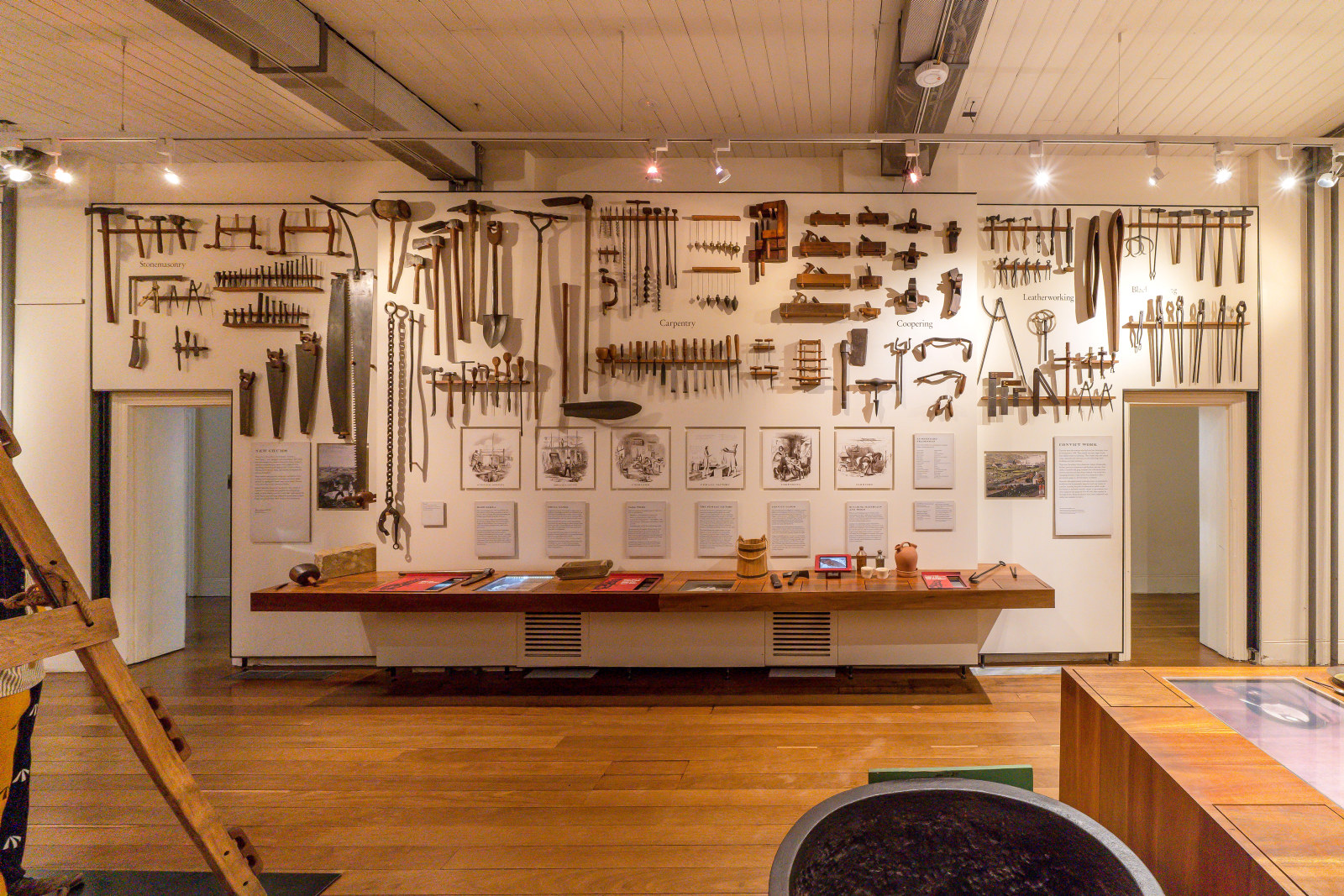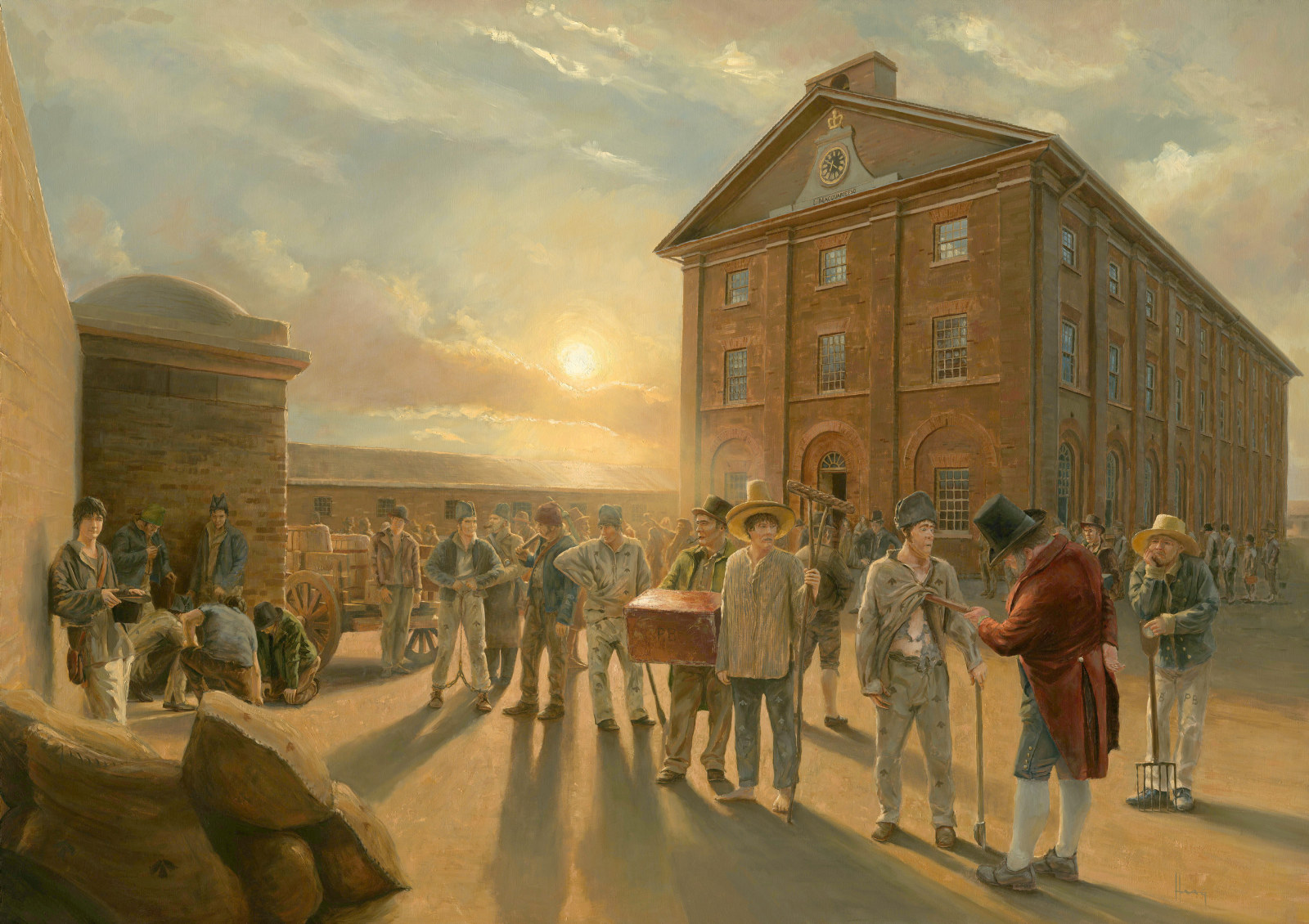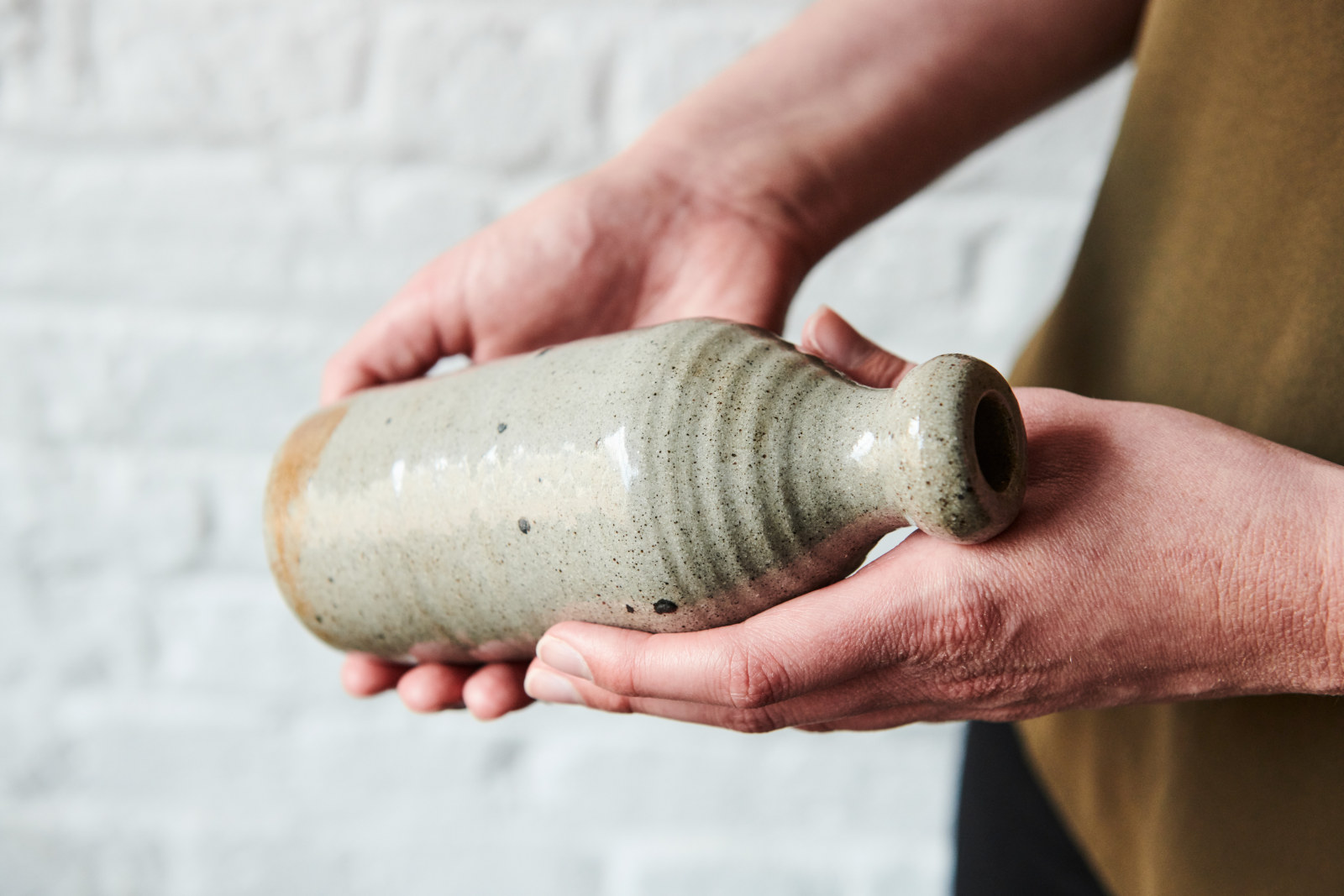Ginger beer bottles
1830s and 1840s
Two salt-glazed stoneware ginger beer bottles were recovered by archaeologists from beneath the floors of Hyde Park Barracks, both dating from the 1830s and 1840s when convicts occupied the wards.
In the nineteenth century, ginger beer could be either alcoholic or non-alcoholic. We don’t know for sure which type these bottles originally contained, but knowing how convicts enjoyed an alcoholic beverage, it’s more likely the ginger beer was alcoholic.
Convicts were not allowed to bring liquor into the Barracks but historical accounts and this archaeological evidence confirm that Barracks convicts found a way to have a drink, both at the public houses around Sydney and in the Barracks wards.
One bottle is marked ‘FOSTER’, for publican William Foster, who sold his ginger beers and other alcoholic drinks at his public house called the 'Centaur', on George Street in 1838. The other bottle, marked with the name ‘P. WHELAN’, was made for publican Philip Whelan, who took over the licence of the Centaur from Foster in April 1838, and continued to run pubs in Sydney throughout the 1840s. Whelan, a hawker by trade, was a convict who arrived on Lord Melville (2) in 1830. In 1835 he received his Ticket of Leave and in 1837 his Certificate of Freedom.
William Foster was no relation to the now famous Australian beer Foster’s Lager, which was established in Melbourne in 1886.
A traveller in Australia has observed that, to convicts ‘the great charm of life is to be as drunk as often as possible'.
W.B. Ullathorne, The Catholic Mission in Australasia. Liverpool: Rockliff & Duckworth, 1837, p29.
Published on
Related

Convict Sydney
Objects
These convict-era objects and archaeological artefacts found at Hyde Park Barracks and The Mint (Rum Hospital) are among the rarest and most personal artefacts to have survived from Australia’s early convict period

Convict Sydney
Convict Sydney
From a struggling convict encampment to a thriving Pacific seaport, a city takes shape.

Learning resources
Explore our range of online resources designed by teachers to support student learning in the classroom or at home